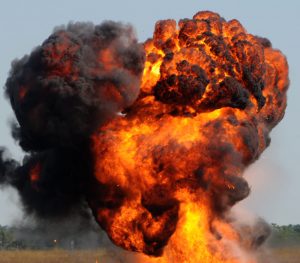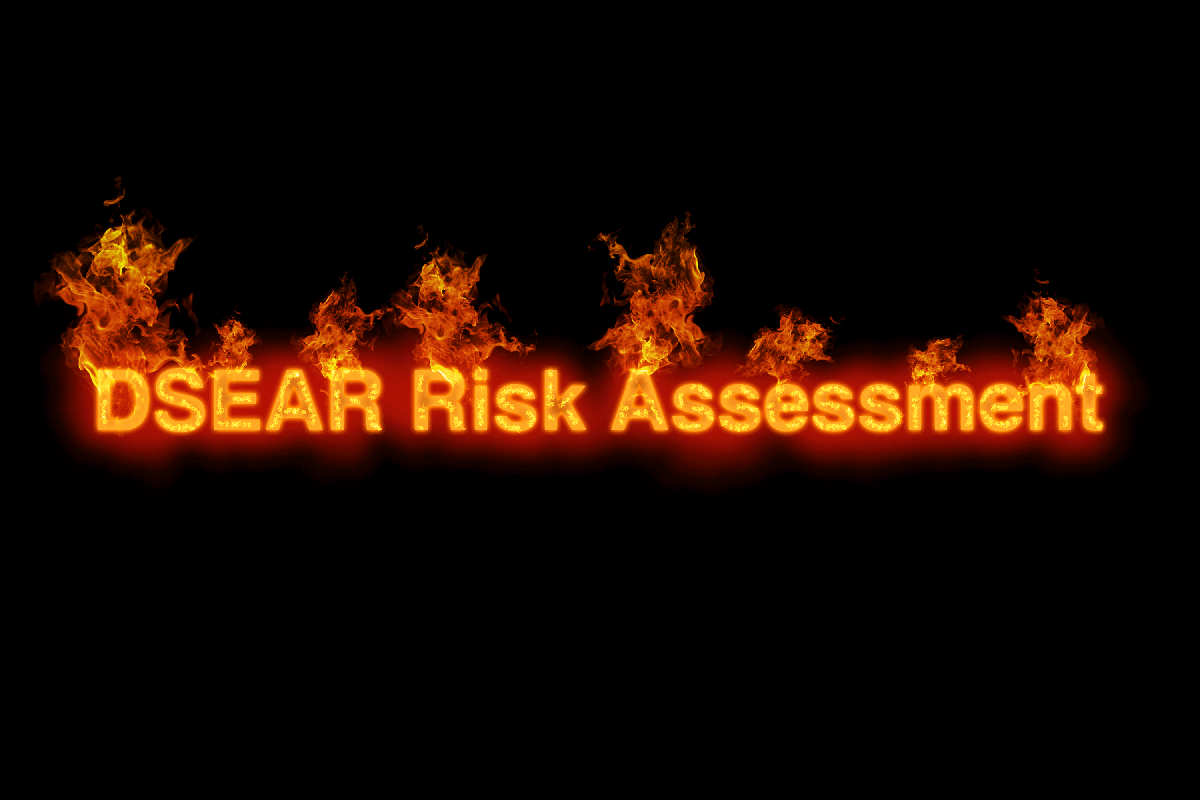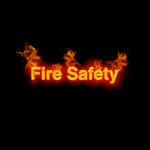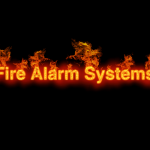If you’re a business owner who works with hazardous substances, DSEAR Risk Assessment is something that needs to be on your radar. DSEAR stands for Dangerous Substances and Explosive Atmospheres Regulations 2002, which is the legislation that covers all of this.
DSEAR was introduced to protect employees from exposure to dangerous substances.
Contents
- 1 What Is a DSEAR Risk assessment?
- 2 What does DSEAR require duty holders to do?
- 3 What are the benefits of a DSEAR risk assessment?
- 4 Who should carry out a DSEAR risk assessment?
- 5 How often should a DSEAR risk assessment be carried out?
- 6 What will my DSEAR risk assessment involve?
- 7 What is ATEX and explosive atmospheres?
- 8 What are the dangers of working in an explosive atmosphere?
- 9 How can DSEAR help protect employees from the dangers of working in an explosive atmosphere?
- 10 What are DSEAR Zones?
- 11 What should I do if I work in a DSEAR Zone?
- 12 What Defines a Dangerous Substance?
- 13 What Types Of Activities Does DSEAR Cover?
- 14 Conclusion
What Is a DSEAR Risk assessment?
A DSEAR risk assessment process involves classifying substances as either non-hazardous or hazardous, before deciding what controls need to be put in place. A DSEAR risk assessment can help identify any risks associated with your particular work situation so you can take steps to reduce them!
What does DSEAR require duty holders to do?
DSEAR requires duty holders to identify the hazards associated with their work, assess risks, and put in place appropriate control measures.
 A DSEAR Risk Assessment is a legal requirement for most workplaces that deal with hazardous substances, whether or not you are planning on working with hazardous substances.
A DSEAR Risk Assessment is a legal requirement for most workplaces that deal with hazardous substances, whether or not you are planning on working with hazardous substances.
DSEAR risk assessments must be completed if your business falls within any of the following categories:
- Manufacturing other explosive products (e.g. fireworks)
- Operating an Explosives Storage Facility
- Working at height with a fall arrest system – Handling flammable liquids in large quantities (more than 200L)
- Working with compressed gases in large containers (more than 500kg)
If you’re unsure whether your work falls within any of these categories, speak to an environmental health officer or consult the DSEAR guidance document.
It’s important to remember that DSEAR risk assessments must be tailored to your specific workplace, so even if your business doesn’t fall within any of the categories above, you may still need to complete a DSEAR risk assessment.
What are the benefits of a DSEAR risk assessment?
A DSEAR risk assessment can help identify any risks associated with your particular work situation so you can take steps to reduce them! Additionally, DSEAR compliance can help businesses demonstrate due diligence in the event of an incident.
Who should carry out a DSEAR risk assessment?
A DSEAR Risk Assessment should be carried out by someone with specialist knowledge in this area, such as a health and safety consultant or fire safety engineer. If you’re unsure who to speak to, your local authority should be able to help.
How often should a DSEAR risk assessment be carried out?
A DSEAR Risk Assessment should be reviewed regularly, depending on the changes in your work situation. However, it’s generally recommended that they’re carried out at least every five years.
What are the consequences of not carrying out DSEAR Risk Assessments?
There are hefty penalties for failing to carry out DSEAR Risk Assessments. Penalties can include fines of up to £5000, and imprisonment if the offence is deemed so serious that it’s in the Magistrates Court.
What will my DSEAR risk assessment involve?
A DSEAR risk assessment should involve an inspection of your premises, which will help identify all the hazardous substances that are being used. DSEAR compliant Risk Assessments must be documented and kept for a certain period (dependent on business size), but generally, DSEAR Risk Assessments need to be available upon request from employees or safety representatives.
If you’re a business owner who works with hazardous substances, DSEAR Risk Assessment is something that needs to be on your radar.
What is ATEX and explosive atmospheres?
ATEX is the name of a European Union directive that sets out minimum safety and health requirements for workplaces with explosive atmospheres. An explosive atmosphere is defined as “a mixture of gases, vapours or mists which, in contact with an ignition source, may cause an explosion.”
What are the dangers of working in an explosive atmosphere?
Working in an explosive atmosphere can be extremely dangerous as it can lead to fires and explosions. Employees who work in these environments are at risk of serious injury or death.
How can DSEAR help protect employees from the dangers of working in an explosive atmosphere?
DSEAR helps protect employees from the dangers of working in an explosive atmosphere by setting out minimum safety and health requirements. These requirements include measures such as providing adequate ventilation, training employees on how to work safely in these environments, and ensuring the correct safety equipment is provided.
What are DSEAR Zones?
DSEAR Zones are areas in which there is a greater risk of an explosive atmosphere developing.
Hazardous areas are divided into zones depending on the frequency and duration of an explosive gas atmosphere, as follows:
- Zone 0: An area in which an explosive gas atmosphere is present continuously or for long periods;
- Zone 1: An area in which an explosive gas atmosphere is likely to occur in normal operation;
- Zone 2: An area in which an explosive gas atmosphere is not likely to occur in normal operation and, if it occurs, will only exist for a short time.
What should I do if I work in a DSEAR Zone?
 If you work in a DSEAR Zone, it’s important to be aware of the dangers and take steps to protect yourself from potential explosions. This includes following all the safety measures that have been put in place, such as wearing the correct personal protective equipment (PPE) and obeying any warning signs.
If you work in a DSEAR Zone, it’s important to be aware of the dangers and take steps to protect yourself from potential explosions. This includes following all the safety measures that have been put in place, such as wearing the correct personal protective equipment (PPE) and obeying any warning signs.
What Defines a Dangerous Substance?
A Dangerous Substance is defined as “a substance which, because of its chemical nature, presents a risk to employees if it escapes from the container in which it is stored.”
What Types Of Activities Does DSEAR Cover?
The following are some examples of the sort of tasks covered by the DSEAR:
- storage of petrol as a fuel for cars, boats or horticultural machinery
- use of flammable gases, such as acetylene, for welding
- handling and storage of waste dusts in a range of manufacturing industries
- handling and storage of flammable wastes such as fuel oils
- welding or other ‘hot work’ on tanks and drums that have contained flammable material
- work that could release naturally occurring flammable substances such as methane in coalmines or at landfill sites
- use of flammable solvents in laboratories
- storage and display of flammable goods, such as paints, in shops
- filling, storing and handling aerosols with flammable propellants such as LPG
- transporting flammable substances in containers around a workplace
- deliveries from road tankers, such as petrol and bulk powders
- chemical manufacturing, processing and warehousing
- the petrochemical industry, both onshore and offshore
- handling, storage and use of gases under pressure
- handling, storage and use of substances corrosive to metal.
Conclusion
The Dangerous Substances and Explosive Atmospheres Regulations 2002 (DSEAR) set out the law on how to protect employees from the dangers of hazardous substances. DSEAR Risk Assessments are a key part of complying with these regulations and can help identify any risks associated with your particular work situation.
They should be carried out by someone with specialist knowledge in this area, such as a health and safety consultant or fire safety engineer.
DSEAR Risk Assessments should be reviewed regularly, depending on the changes in your work situation.
However, it’s generally recommended that they’re carried out at least every five years.
There are hefty penalties for failing to carry out DSEAR Risk Assessments, so it’s important to ensure your business is compliant.




